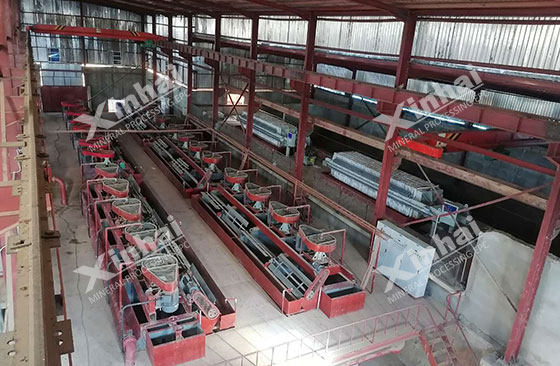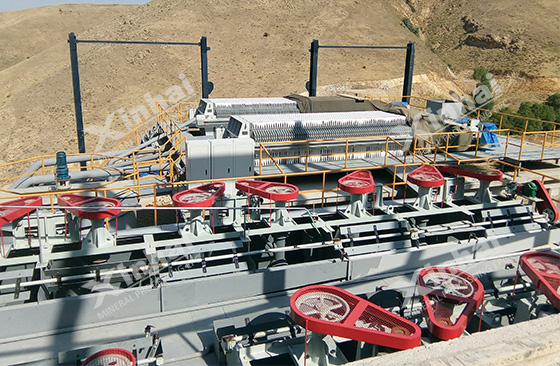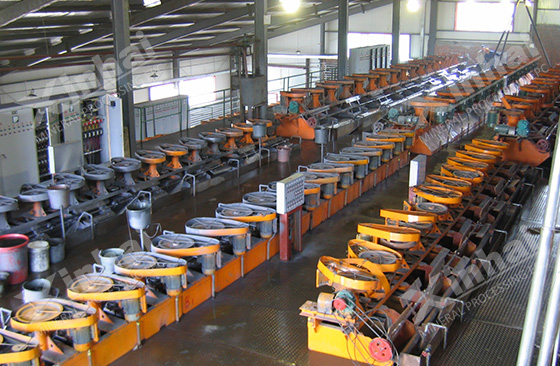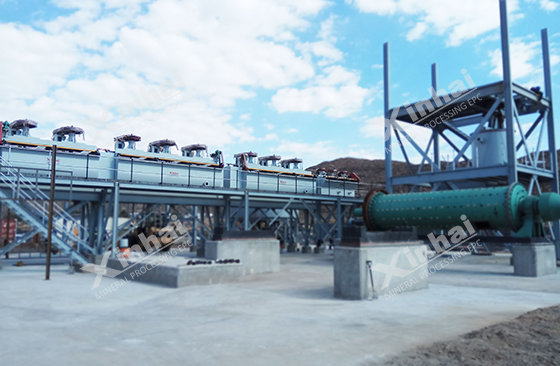Copper is an important nonferrous metal, and its production and sales volume is second only to aluminum. Copper metal is mainly extracted from sulfide ores, and mineral resources are relatively abundant, among which oxide copper ores account for a large proportion. Due to the different types of copper oxide ores, they can be roughly divided into two types: one is simple and easy-to-handle copper ore (such as malachite, etc.), which is often treated by flotation, and the other is difficult-to-handle copper oxide ores (such as chrysocolla, pseudomalachite, etc.), which are often treated by chemical methods. Although the mineral processing indicators obtained by chemical treatment methods are better, chemical methods such as acid leaching have a long treatment cycle and slow recovery rate, so flotation methods are often used as the preferred method for oxide copper. The following article will explain the flotation process of copper oxide to help you better understand the mineral processing technology of copper oxide.
Use the table of contents below to navigate through the guide:
01Oxide copper resources and flotation technology

The most common oxide copper minerals are malachite and azurite, followed by chrysocolla and cuprite. In addition, there are copper sulfates, phosphates, arsenates or other soluble salts. Flotation methods are selected for these oxide copper ores, and the principle process of flotation is relatively simple. Ores mainly composed of copper oxide will be sulfided first and then mixed flotation, while ores mainly composed of sulfide ores need to float sulfide ores first, and then float oxide ores. When the ore is easy to mud, the stage grinding and stage separation process needs to be modified to the stage grinding and centralized separation process.
02Direct flotation method of oxide copper
The direct flotation method is an earlier flotation method, mainly used to treat oxide copper ores with simple mineral composition and uncomplicated mineral properties. Direct flotation methods can be divided into three types: carboxylic acid flotation method, amine collector flotation method and other chelating agent flotation methods.

1. Carboxylic acid flotation method: suitable for processing low-grade oxide copper ores. This method uses carboxylic acid agents to interact with the surface of copper oxide minerals to make the mineral surface hydrophobic, thereby achieving separation from gangue minerals. The carboxylic acid flotation method has the advantages of low chemical consumption and good selectivity, especially when the properties of copper oxide minerals and gangue minerals are greatly different.
2. Amine collector flotation method: This method has a strong ability to collect oxide copper ore, but it is easily affected by sludge, resulting in poor selectivity. Therefore, attention needs to be paid to the handling of sludge.
3. Chelating agent flotation method: It is mainly used for minerals such as chrysocolla. It requires the use of chelating agents composed of special collectors such as potassium octylhydroxamate, benzotriazole and neutral oil emulsifiers for flotation.
Although the direct flotation method has been used for a long time, only the fatty acid flotation method is widely used in industry.
03Sulfidation-flotation method for oxide copper ore

This method was first used for flotation of lead carbonate ore, and has now become one of the common methods for flotation of oxide copper ore. The key point of the sulfidation flotation method lies in the result of the sulfidation process. The amount of sodium sulfide needs to be strictly controlled during the sulfidation process, because the sulfiding agent is an effective activator for copper oxide minerals and an inhibitor of copper sulfide minerals or sulfided oxides. In order to prevent or reduce this inhibitory effect, it is necessary to strictly control the amount of sulfiding agent. The concentration of the sulfiding agent can be controlled by segmented dosing or other methods.

In summary, the separation technology of oxide copper ore is rich and varied, and different ore types and composition characteristics determine the use of appropriate flotation processes. Both direct flotation and sulfide flotation play an important role in the beneficiation of oxide copper ore. Reasonable selection of flotation methods and optimization of process flow can not only improve the comprehensive recovery rate of ore, but also effectively reduce production costs. In the future, with the continuous advancement of technology, the flotation process of oxide copper ore is expected to be further optimized in terms of efficiency and environmental protection, providing better support for the efficient development and sustainable utilization of copper resources.


 marketing@ytxinhai.com
marketing@ytxinhai.com  0086 13810327080
0086 13810327080 






































































































 CHAT
CHAT MESSAGE
MESSAGE






